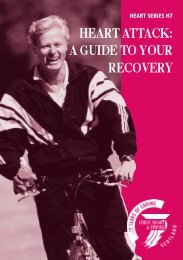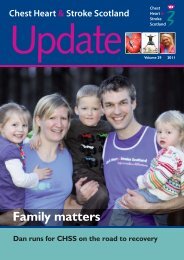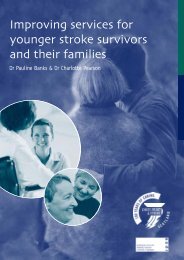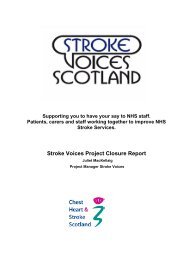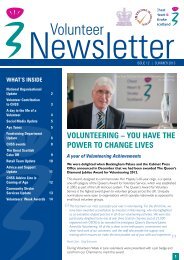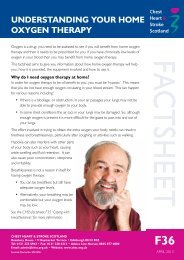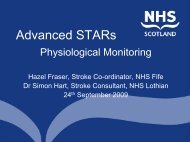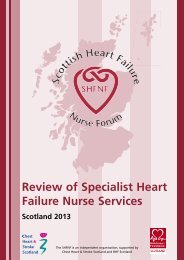CHSS Fact sheet Driving after a stroke - Chest Heart & Stroke Scotland
CHSS Fact sheet Driving after a stroke - Chest Heart & Stroke Scotland
CHSS Fact sheet Driving after a stroke - Chest Heart & Stroke Scotland
- No tags were found...
You also want an ePaper? Increase the reach of your titles
YUMPU automatically turns print PDFs into web optimized ePapers that Google loves.
• You hold a current Large Goods Vehicle (LGV) or Passenger Carrying Vehicle (PCV)(Group 2) driving licence.If you are not sure whether any of the above apply to you, discuss the matter with yourdoctor.Disability of your arms or legs <strong>after</strong> a <strong>stroke</strong> may not prevent you from driving. You maybe able to overcome driving difficulties by driving an automatic vehicle or one with ahand-operated accelerator and brake.If there are any restrictions on the types of vehicle you can drive, these must be shownon your driving licence.In the interests of road safety, you must be sure that you can safely control a motorvehicle at all times.Contact the DVLA to obtain the following forms:• Form ‘Declaration for voluntary surrender’• Appropriate medical questionnaire to assess your fitness to drive STR1 ‘Confidentialmedical information’• The leaflet TIA1 ‘Car or motorcycle drivers who have had a <strong>stroke</strong> or transientischaemic attack (TIA)’How to contact the DVLA• Enquiries for car drivers and motorcyclists: 0300 790 6806• Enquiries for bus coach lorry drivers: 0300 790 6807• Write to:Drivers Medical GroupDVLASwanseaSA99 1TU• Email: eftd@dvla.gsi.gov.uk• Download online: www.direct.gov.uk/driverhealthFACTSHEET






